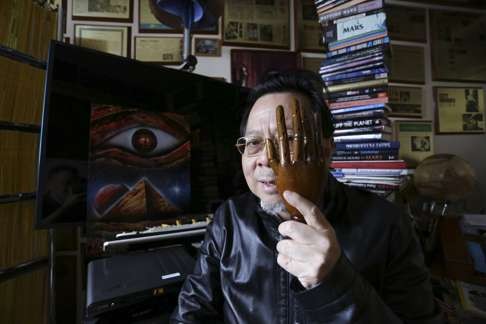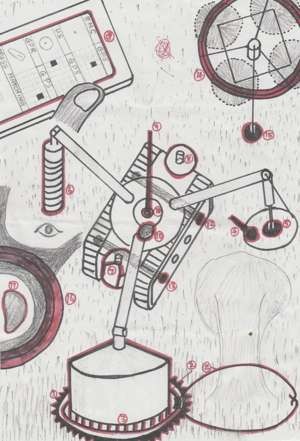
Hong Kong space pioneer prepares for one last voyage of discovery
He designed rock grippers that went to Mars and tools for Russia’s space station, now dentist Ng Tze-chuen has his sights fixed on one last mission – to Jupiter’s moon
Space tool designer Ng Tze-chuen is preparing for one last adventure in his quest to find extraterrestrial life – a mission to Europa, the moon of Jupiter.
Ng, a 64-year-old dentist by trade, found fame as the garage inventor who designed a pair of planetary rock grippers for the European Space Agency’s (ESA) Beagle 2 Mars lander.
“I’m an astronaut trapped in a dentist’s body,” he said. “I can’t explain why I was inspired to build [planetary rock grippers] while picking at someone’s tooth filling. Inspiration is elusive.”
With no formal institutional background, Ng made his way in astro-engineering circles by relentlessly knocking on the doors of various space agencies and their subcontractors with his own blueprints for space equipment.
He even claims to have designed secret weapons for the ESA called micro end effectors that are fitted
to planetary landers to be deployed if necessary should hostile aliens turn up.
Ng is now awaiting the go-ahead from the ESA for his latest project, which is to advise on sampling operations for the much-anticipated Europa voyage.
The mission, directed by the National Aeronautics and Space Administration (Nasa) in the United States, aims at sending a spacecraft to sample materials from Europa, which is believed to have a life-hosting ocean beneath its icy shell.
“Global space agencies are now shifting their attention [from Mars] to Europa for exobiology for the very simple reason that a warm ocean is predicted to lie underneath the icy planet,” he explained. “The moon of Jupiter has geological features that have never previously been imagined.

“Space engineers are proposing a penetrator probe to plunge into the frozen ice. They also want to send a mini lander to the icy surface.”
Ng, who would be designing sampling and sensing devices for the penetrator and mini lander, said the Europa mission would be his swansong in exobiology before he retires.
“The launch won’t happen until at least 2023. It takes seven years to reach Europa and several years for orbiting and sensing. We expect landing in 2034. I will be in my eighties by then.”
But he said he was optimistic about the possibility of life on Europa given the existence of a warm ocean and an encouraging level of oxygen in its atmosphere.
“The gravitational draw between Jupiter and its three moons, which creates tidal energy, could create a warm ocean under the icy layer a few miles in thickness,” he said. “Liquid water is a sign of life. Microorganisms are definitely within our expectation.”
But he said a main challenge of the Europa mission, which he likened to “Eskimo fishing”, was the landing of the penetrator as the surface of the icy shell could easily crack and trap the legs of the spacecraft.
“The penetrator does not have a successful track record, so we have to design sampling and sensing devices that will work in all circumstances. So it’s either a successful vertical penetration or lying flat like a dead fish.”
Other scientists said that I am China’s Da Vinci and I concur. After all, we were born exactly 500 years and a month apart
Ng said it was fate that set him on the path to designing spacecraft and unlocking the mysteries of exobiology. “Life is an audition. God gives everyone a chance to play their part, and then we queue up for cremation.”
He said he claimed no credit for his designs because when he drew the blueprint of a spaceship, he always felt like that there was a genie who worked through him and that he was merely a vehicle who facilitated that creative process.

“The blueprints naturally come out and they don’t feel like mine,” he said.
Given his day job as a dentist, he usually starts work on his designs right after he gets home at 5pm and finishes at 11pm.
“And I go through my designs one last time in my dreams,” he said. “Then I dispatch my sketches to various agencies by 10am in the morning.”
He said that when he started pursuing astro-engineering, it was extremely difficult to get accepted.
“I knocked at the door of the Russian space agency 300 times before they gave me a seat at their space project. I was a dentist from Hong Kong. Nobody knew who I was.”
He started to become more recognised in 1995 when his first pair of space forceps rocketed to the Russian space station Mir.
“But without any university credentials, I still often find myself feeling like an outsider,” he said. “But other scientists said that I am China’s Da Vinci and I concur. After all, we were born exactly 500 years and a month apart.
“I imagined I was a Martian crab clawing on the red planet in my last life. I came to earth in this life to tell the human race that we are not alone in our universe.”

